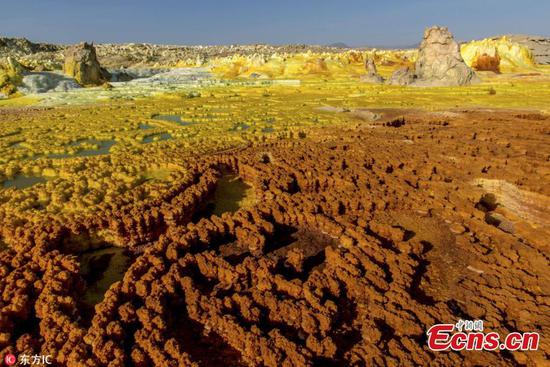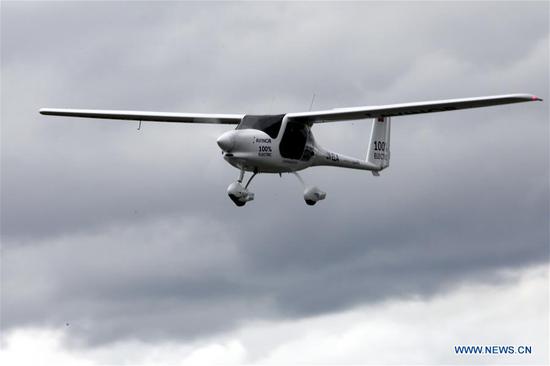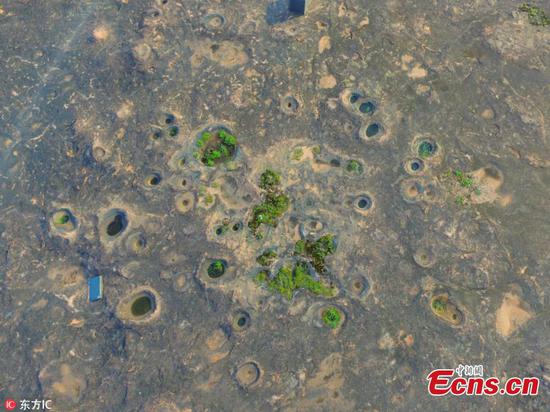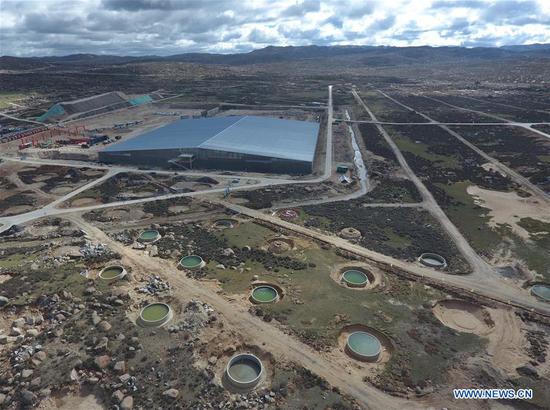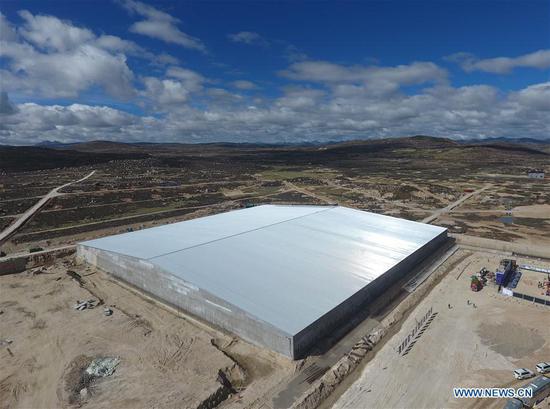
Aerial photo taken on June 19, 2018 shows the Water Cherenkov Detector in the Large High Altitude Air Shower Observatory (LHAASO) which is under construction in Daocheng County, southwest China's Sichuan Province. An observatory for detecting cosmic rays is being built in Sichuan Province. (Xinhua/Liu Kun)
An observatory for detecting cosmic rays in southwest China's Sichuan Province will be semi-functional next year, scientists said Wednesday.
The project, known as Large High Altitude Air Shower Observatory (LHAASO), is located in the mountains of the eastern Qinghai-Tibet Plateau at an average altitude of 4,110 meters.
The project was approved in 2015 by China's state economic planner with a budget of 1.2 billion yuan (around 186 million U.S. dollars), and construction began in July 2016.
It is estimated that a quarter of the project will be completed by the end of 2018 and will be functional in early 2019, said Cao Zhen, chief scientist of the project from China Academy of Sciences.
"Upon completion, it is expected to be the world's largest observatory for detecting cosmic rays," he said.
"With a size equivalent to 200 standard soccer fields, LHAASO features thousands of detectors that will probe cosmic rays and provide statistics for us to analyze," said Cao.
Cosmic rays are highly penetrative rays from outer space. Their collisions with atmospheric particles create a variety of different particles, including neutrons, mesons and hyperons.
Detection of ray showers will help pinpoint the sources of the rays and help decode the origins of the universe, solar activity and Earth's space environment, according to Cao.
The project is expected to be completed by June 2021.






















